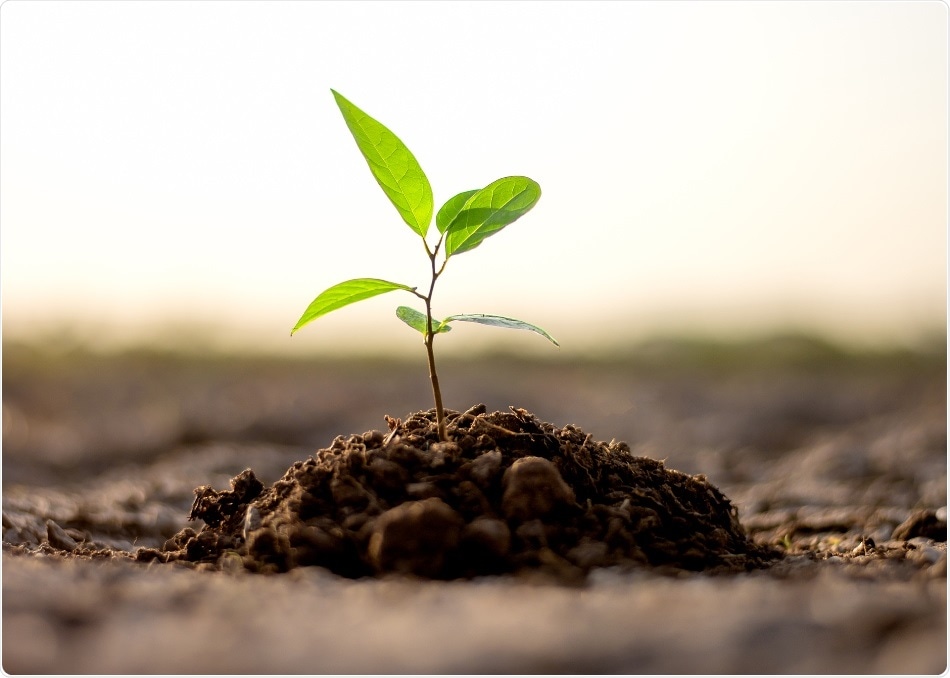Baby seedling developing from the soil depth encounters a challenge—the downward push of gravity. To prevail, the plant should sense the force and later push upwards with a bigger force. The proof that the seedling has won against the force of gravity is visible growth.

Image Credit: Shutterstock.
Until recently it was not known how plants sense force; however, a finding by plant biologists from Washington University in St. Louis will help comprehend how mechanical forces, like gravity, impact the way plant cells form and grow.
Ryan Calcutt and Ram Dixit in Arts & Sciences joined hands with material scientists from the New Jersey Institute of Technology and Alabama State University through the Center for Engineering Mechanobiology to develop the first artificial scaffolds that can aid the growth of individual plants cells. The research was published on October 20th, 2021, in the journal Science Advances.
Calcutt, a graduate student in Washington University’s Plant and Microbial Biosciences Program and the first author of the study, analyzed over 20 scaffolds—each one comprising a different material with a different set of chemical and physical properties.
The scaffolds were developed by the material scientists involved in the association, including Richard Vincent, a graduate student at the New Jersey Institute of Technology working in the lab of Treena Arinzeh, distinguished professor of biomedical engineering, and Derrick Dean, professor of biomedical engineering at Alabama State University.
We found a range of effectiveness, which was useful in probing which properties were important for adherence of plant cells to the scaffold. We could compare the properties of the scaffolds that did not work very well with those that did.”
Ryan Calcutt, Washington University in St. Louis
A pattern surfaced—negatively charged, hydrophobic materials that create an electrical charge in response to mechanical stress formed the most efficient scaffolds. These similar properties are seen in the plant’s cell wall.
A single material stood out in particular. Scaffolds composed of polyvinylidene fluoride-tetrafluoroethylene copolymers imitated the structure and properties of the plant’s cell wall.
Calcutt identified that pectin—a complex, negatively charged polysaccharide that develops gels—is principally responsible for binding plant cells to the scaffolds.
This was exciting to us because it reveals that the way plant cells adhere to scaffolds is similar to the way they adhere to each other within plant tissues. Therefore, these scaffolds should be suitable for the construction of functional plant tissues in the future.”
Ryan Calcutt, Washington University in St. Louis
“Because pectin is found in the cell walls of all land plants, these scaffolds hold promise as a widely applicable tool,” remarks Dixit, professor of biology at Washington University.
The novel tool will enable researchers to grow and visualize cells for a greater period in a physiologically relevant setting. The tool is promising for further research works for analyzing how plant cells differentiate various forces or the developmental signals required for a plant cell to grow into a plant.
This work would not have been possible without our collaborators in engineering. It is a great example of how the confluence of multiple fields can lead to the creation of new technological platforms in biology.”
Ram Dixit, Professor, Biology, Washington University in St. Louis
Source:
Journal reference:
Calcutt, R., et al. (2021) Plant cell adhesion and growth on artificial fibrous scaffolds as an in vitro model for plant development. Science Advances. doi.org/10.1126/sciadv.abj1469.